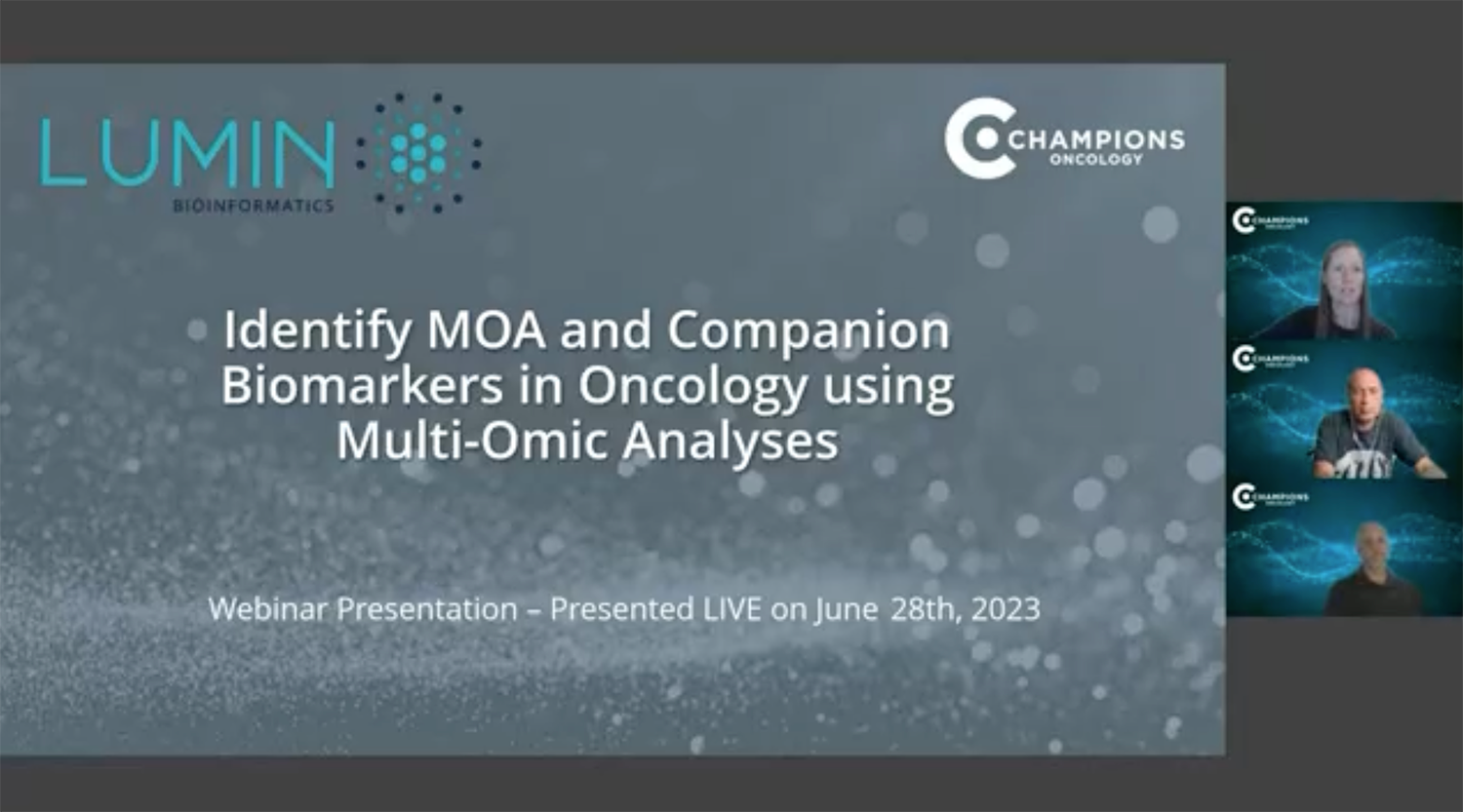On Demand Webinar

There is a significant need for better understanding of an oncology therapeutic’s mechanism of action while in preclinical studies, to then translate into clinic development. Identification of a companion biomarker to identify patients who will benefit from a given treatment can enable the success of clinical trials. Recent advances in high-throughput multiomics are revolutionizing our understanding of tumor biology.
This webinar will focus on Champions’ multiomics oncology datasets, including genomics, proteomics and phospho-proteomics, and will show how proprietary algorithms are used to reveal mechanisms of action and potential companion biomarkers as part of a preclinical oncology strategy.
Key Topics:
- Molecular, pharmacological, and phenotypical characterization to develop in-depth multiomic datasets
- Identification of suitable models for drug validation
- Identification of mechanisms of action
- Identification of predictive biomarkers
Meet Our Presenter:
 Stefano Cairo, PhD, Sr. Global Scientific Director at Champions Oncology
Stefano Cairo, PhD, Sr. Global Scientific Director at Champions Oncology
A molecular biologist by training with PhD in human genetics, Stefano has a strong background in Translational Research in Oncology, with a specific focus on solid tumors and on pediatric oncology. Prior to joining Champions Oncology, Stefano led several collaborative research projects which led to the identification and validation of new therapeutic targets, cancer pathways and gene signatures used to stratify patient population.
 Gilad Silberberg, PhD, Head of Bioinformaticsr at Champions Oncology
Gilad Silberberg, PhD, Head of Bioinformaticsr at Champions Oncology
Gilad is a systems biologist and a bioinformatician, with PhD in human molecular genetics. Focusing on the holistic perspective of molecular interactions, Gilad has developed algorithms and workflows, which are used for addressing disease and treatment MoA, biomarker and target identification, and sub-classification of patient groups.
